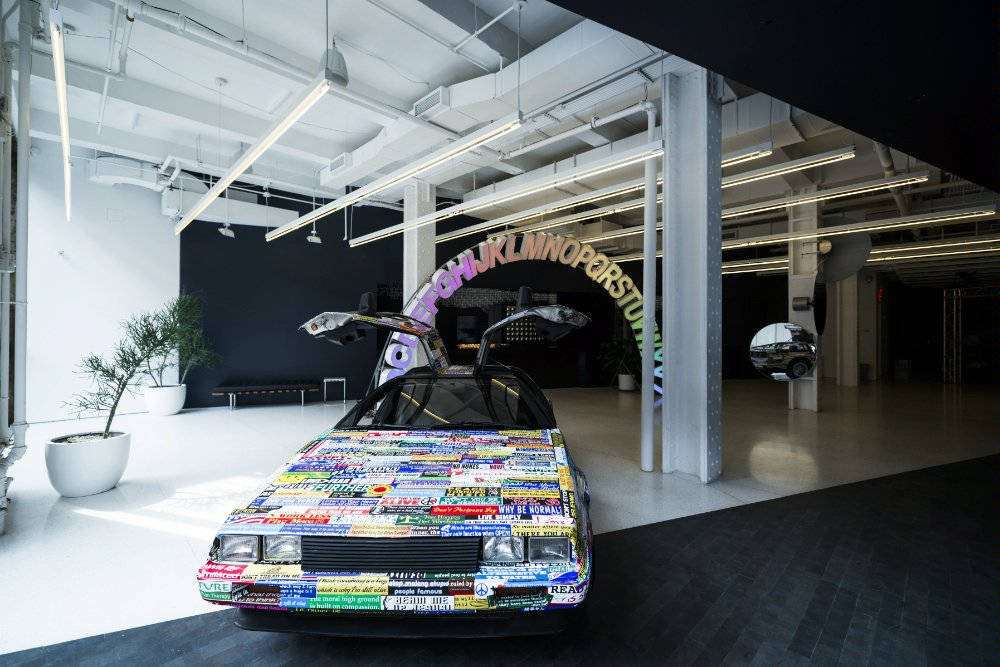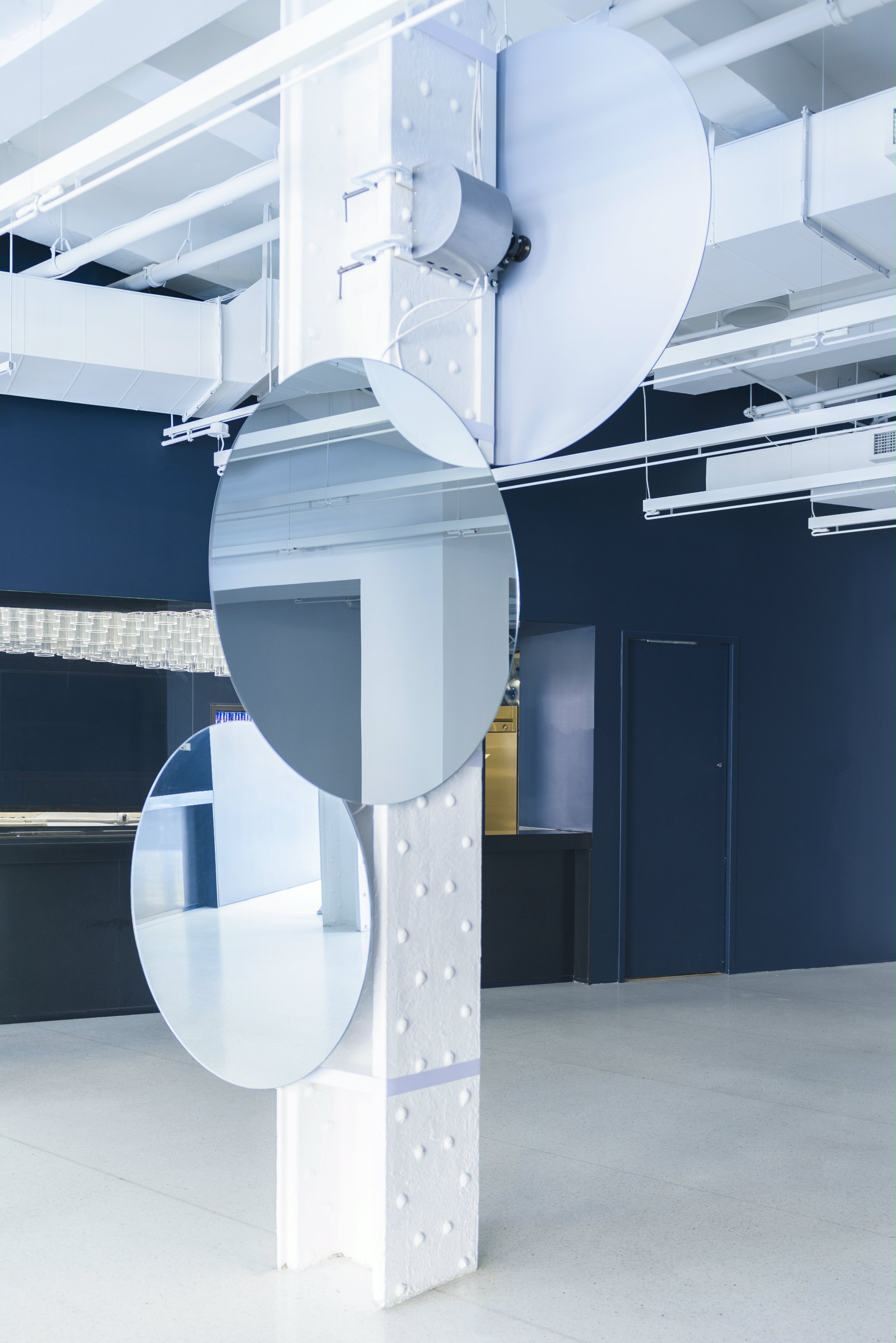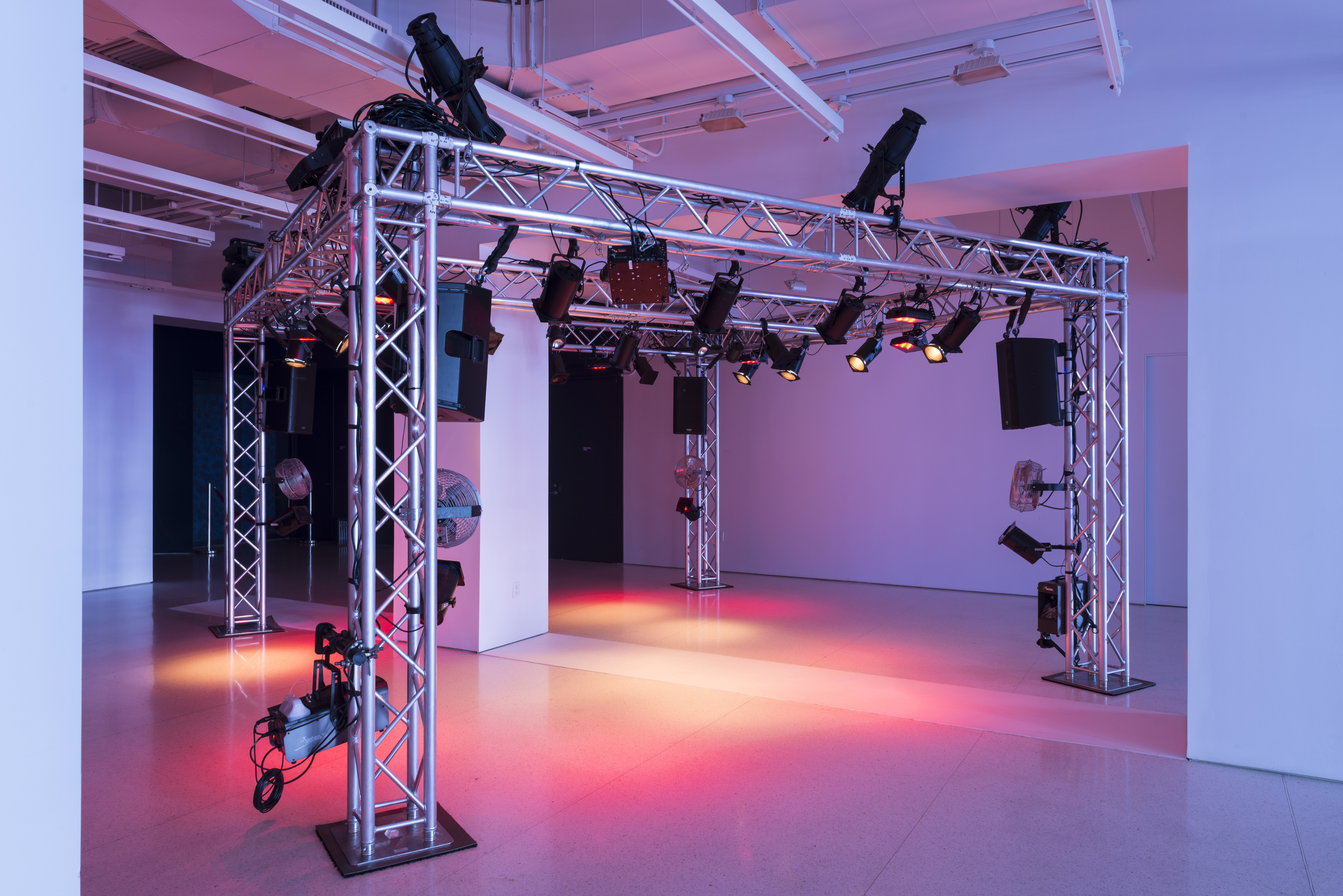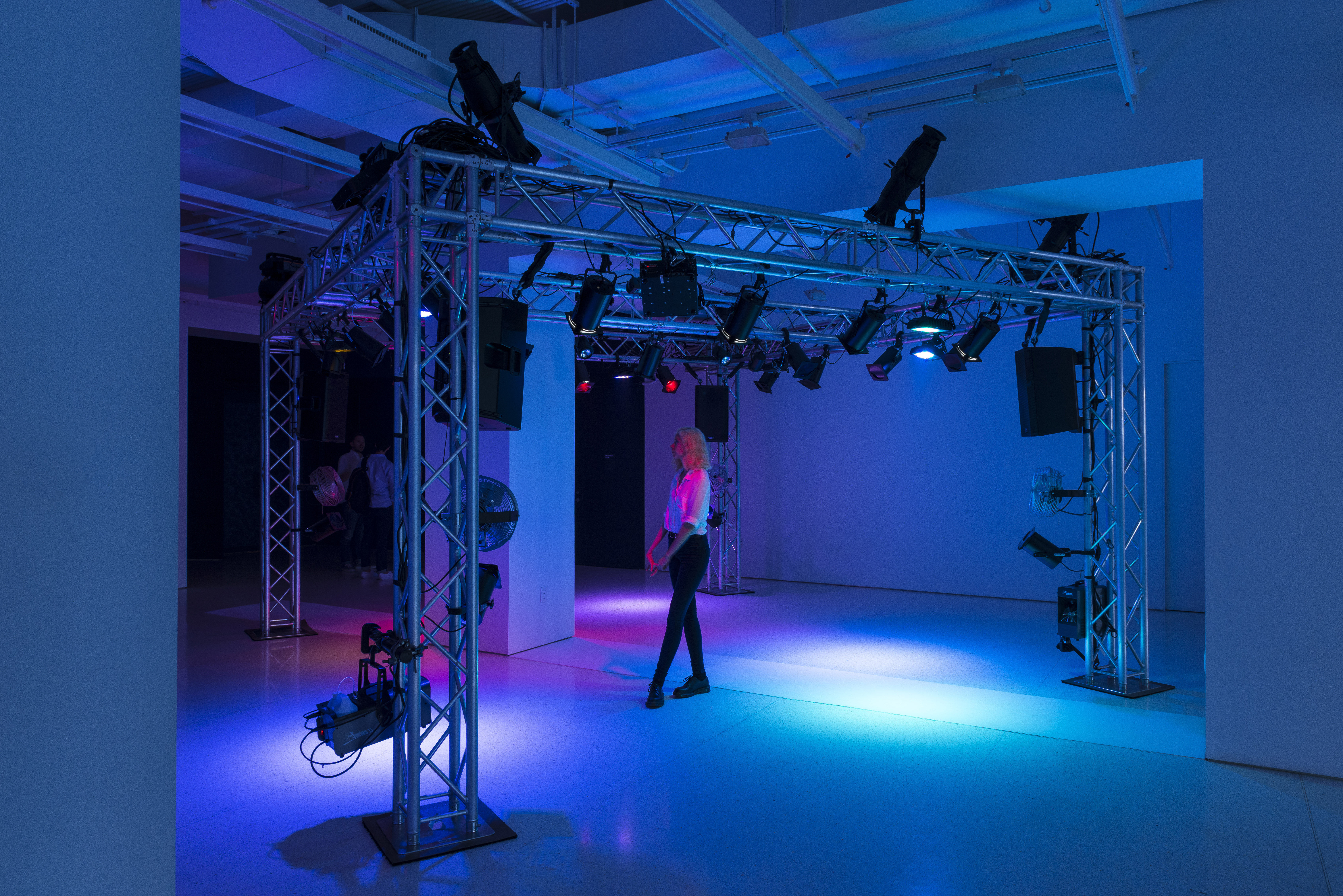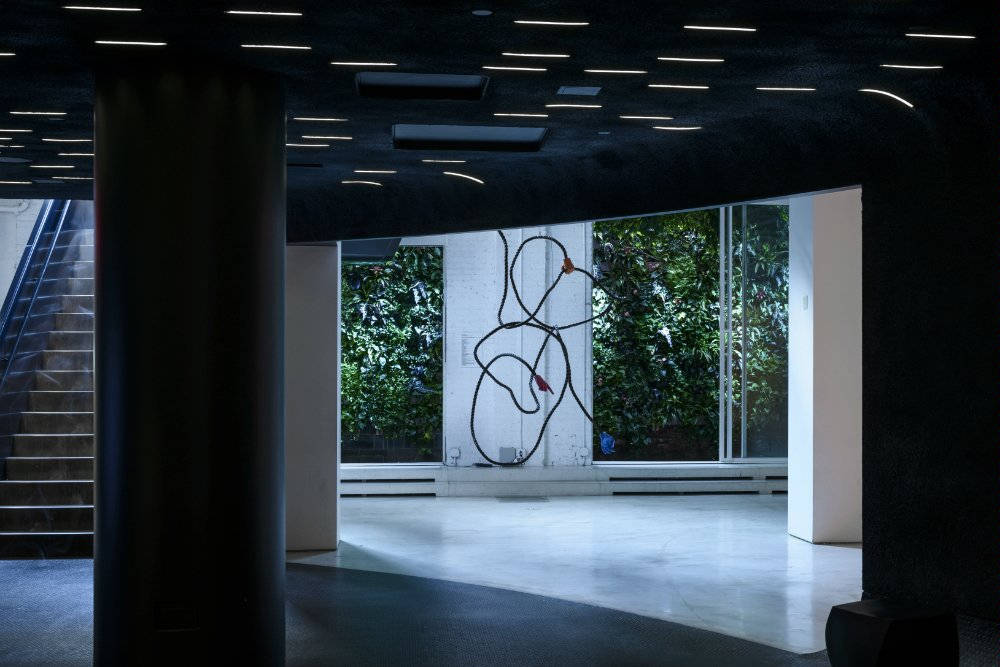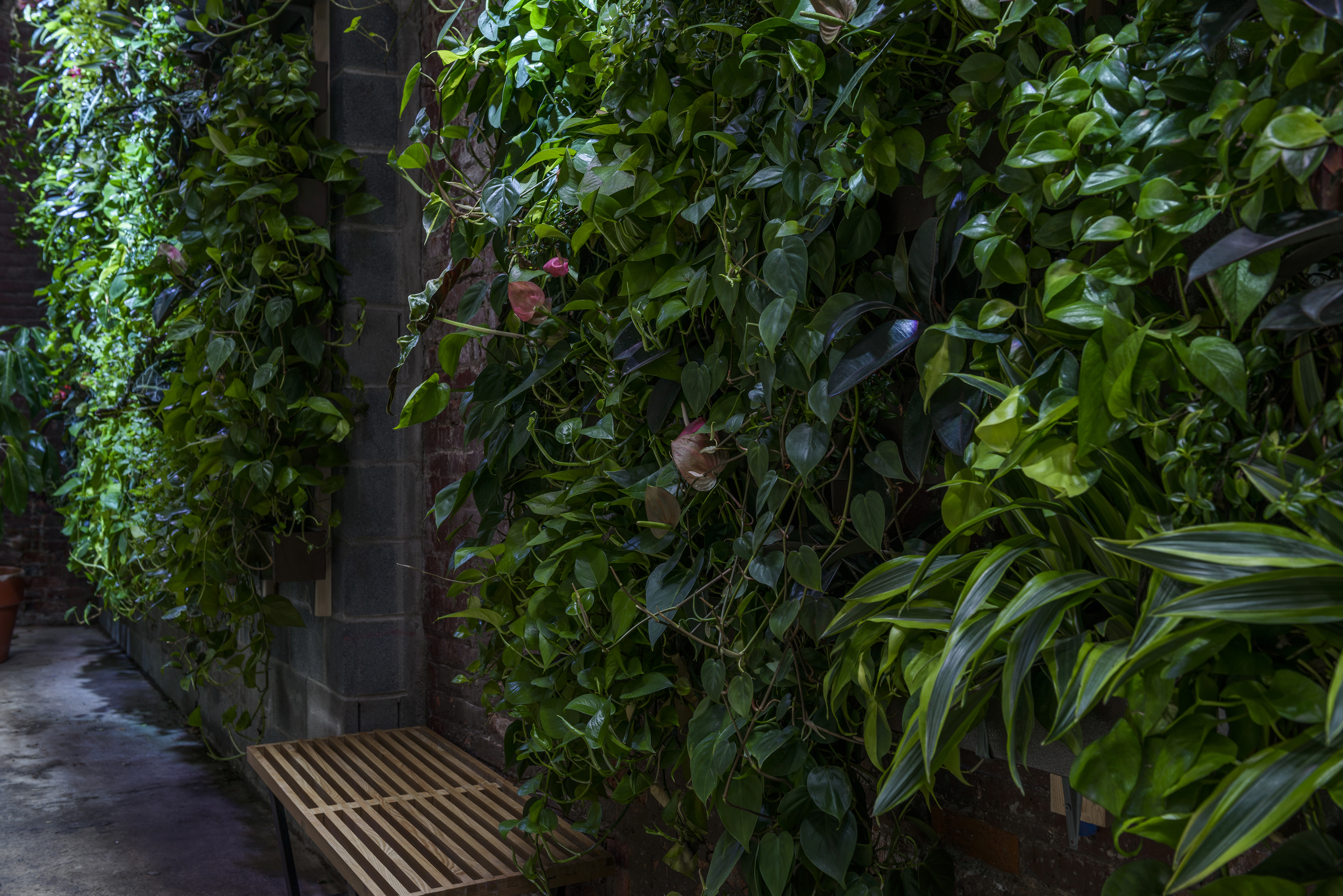LIVING
Peter Coffin
June 18th - September 24th, 2014
Red Bull Arts
New York
LIVING, a solo exhibition by American artist Peter Coffin, comprised of several large-scale, site-specific works, maps the artist’s longstanding interest in the relationship between the life of the object and the approach of the viewer. The exhibition space also operated as a broadcast center for a summer long radio series, Living Live, hosted by Clocktower Radio, and also as a recording studio for the production of the third volume of his Music for Plants album series, including tracks by LVis 1990, Lafawnda, MGMT, Ryuichi Sakamoto and more.
-----
Like how it would be impressive if fingers and branches did the same thing. For instance, when a branch decides, it can branch off with smaller branches, which also grow leaves or pinecones or whatever else. And then these sub-branches can start growing their own sub-branches, which altogether branch out from one mother-branch. What if the fingers on hands did that?
Or how there are all these opposing ideas about the agency of objects. Or surfaces such as images. That they emanate their own personhood. More so, that they represent the mythology of the person who made them. Because the same system that makes branches makes fingers. Well to be precise, photosynthesis and reproduction aren’t exactly the same processes, but the two are similarly algorithmic, in the sense that they follow a predetermined system, with singular outcomes. In both instances as well, the surrounding environment makes a difference. And really, it could be argued that durational modes of art making hinge on related ideas: that the site for production and the site for presentation are in a continual negotiation. That one doesn’t end when the other starts. Instead, the two procedures – that of the making and that of the displaying – continually trade places, or occur at the same time. This impetus sometimes brings abouta type of uncomfortable, even awkward diorama of ‘the artist at work.’ Yet on the other hand, it can deliver fewer burdens, fewer expectations about the subject’s encounter with the object.
The entanglement of those two words, and what they imply, of a subject and an object, is the enigmatic exchange Peter Coffin animates. For if an art object, when encountered by a subject – a viewer – were only what it was. Or more to the point, working within Coffin’s vocabulary, if a plant were just a plant. If a bumper sticker were merely a horizontal rectangle made from vinyl, over which a collection of letters across is inscribed; then fine enough, these objects and their surfaces are a practice in form and style. But what of the affects they elicit in the subject who encounters them? The bumper sticker says something, a sentence that has a meaning. If there are hundreds of them, pasted next to one another, so that we can’t really discern one bumper sticker phrase from the other, and on variously-colored paper surfaces, then the amalgamation of all these words and colors induces a somewhat psychedelic mental and emotional meandering in its interlocutor. A tangent that takes one all kinds of places besides the present, and precipitates all kinds of thoughts besides the obvious, besides what is directly ahead.
So that these mediations eclipse the objects we think are the topic. That is, that the unseen sets of relations between ourselves and what we are looking at, or standing in proximity to, actually takes the foreground of the scene we find ourselves in, pushing both us – the subjects – and them – the objects – to the periphery. Which means that Coffin is not necessarily an author, but one player in a set of transactions, here taken to mean the unseen politics between subjects, and the objects (that actually sometimes resemble and behave a lot like subjects) before them, which are constantly changing, developing, becoming something else, and another something after that.
Time is implied here as well, as these shifts happen not all at once, but over a length of actions – the inconspicuous sequence of a series of plots, which may abruptly, and unexpectedly reverse, distort, collapse.
It follows that if these mediations are flexible, implying that the objects that co-produced them are too, then one could further predict subjects are similarly flexible. That subjects change in the way they see one object, maybe even on account of having seen it.
Or put even more abstractly (as if this narrative non-sequitur isn’t hypothetical enough), one could say that Coffin intuits, and then reproduces, the science of color theory through propositions with physical consequences. That is, apparently a color, orange, for example, is actually the optical product of every other color besides orange. So what we are looking at is the negation of orange. Such as a set of recordings made to serenade plants – at the location and moment the plants were being serenaded – may in fact be everything besides that definition and situation. That branches might be everything but branches, they might even be fingers.
-Mary Margaret Rinebold







